On an extremely small parcel of land this spacious structure appears as a joinery item, internally integrating concrete, hoop-pine and Tallowwood. This contrast establishes a warm yet polished atmosphere throughout. The translucent floor to the ground level courtyard creates a light filled flexible work/living space in the basement.
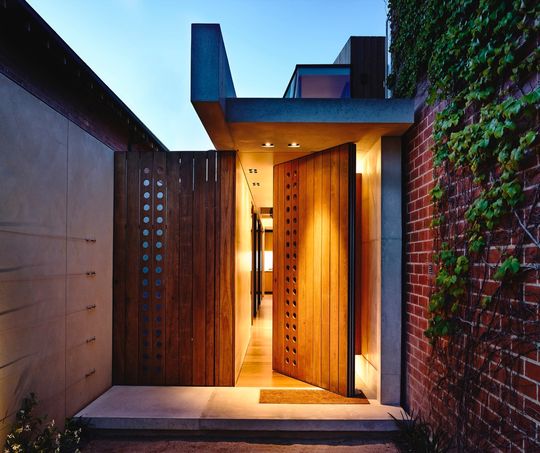
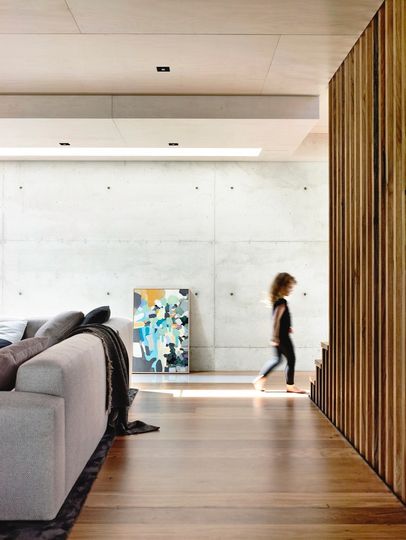
The small site size and close proximity to adjoining properties was a generator for the design. The challenge was to design a spacious, warm, multifunctional home with a full basement to work well as a habitable area. This was achieved by integrating four core ideas; materials, volume, light and flexibility.
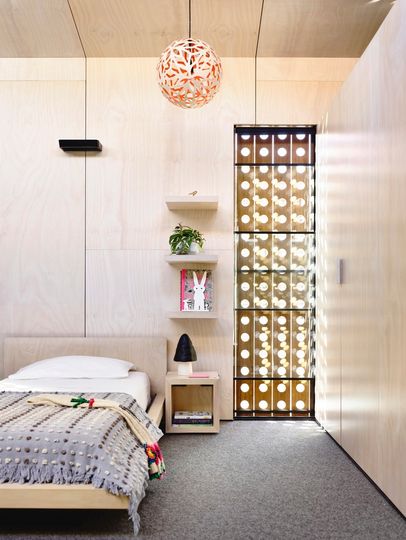
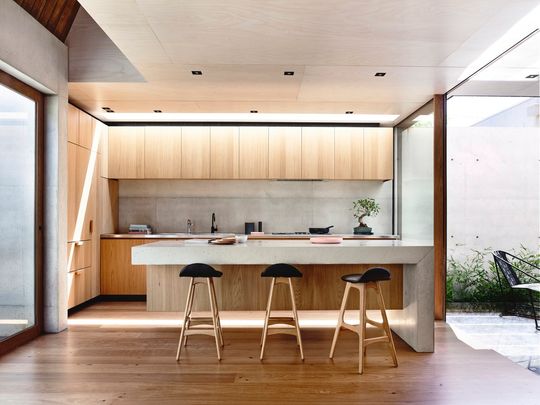
The core experience of warmth is yielded by the limited palette of rich materials. Crisp detailing enhances their feel and appearance. The material interfaces have been considered, negotiated and mitred at every junction, allowing the volume to present itself as one integral joinery piece.
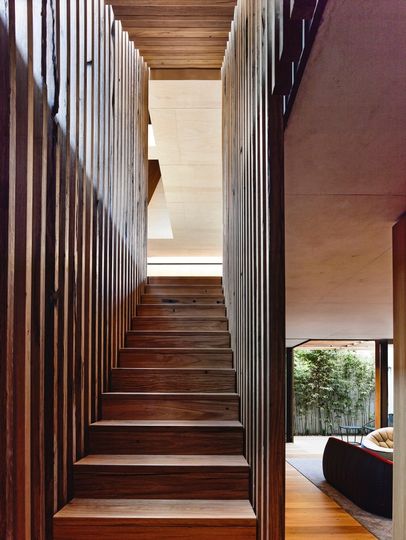
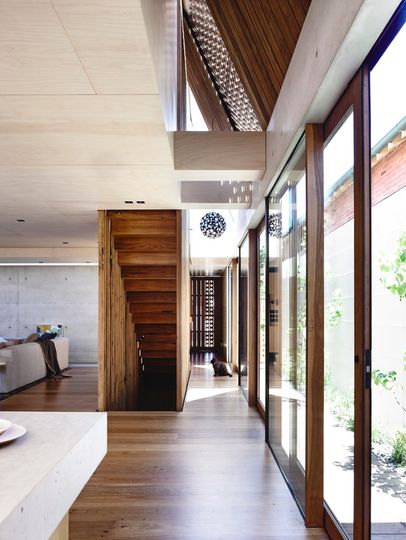
The building's skin is stretched horizontally and vertically as raked walls and ceilings. This along with the staircase provides a volumetric spatial connection over all levels. Light wells penetrate through the building providing each room with generous levels of light and external focus. The translucent stair-well assists with light into the basement. To accommodate the clients, two bedrooms are provided and another sleeping quarter can be incorporated in the basement area for guests. In the future this area can be utilised as a master bedroom suite.

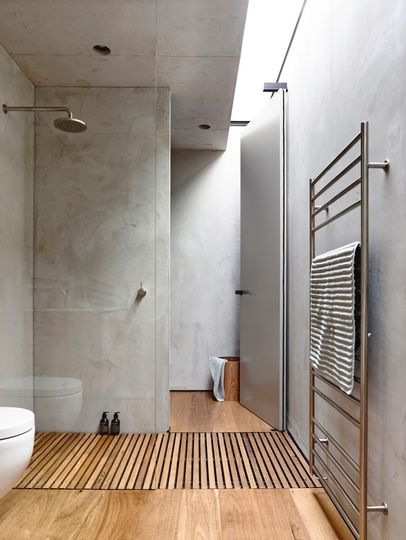
Internal courtyards, timber screens and soft landscaping allow the clients to enjoy their home providing them with the necessary privacy from their neighbours without compromising on the light, spaciousness and comfort that a young family requires. The three levels are connected via light wells and garden aspects, allowing the outside in and light to fill every space of this home, creating a calm, serene atmosphere perfect for withdrawing or work.

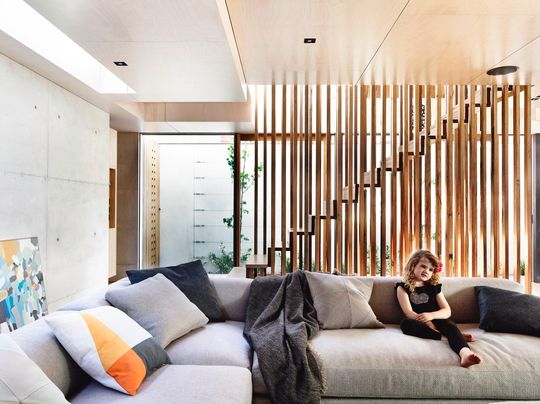
The site is hemmed in by adjoining properties on all sides. The adjacent courtyards are respected by the setbacks provided. The overall height was reduced by incorporating the basement for accommodation. The setbacks have allowed the building to open itself up to the sky throughout. Whilst the courtyards and other landscaped areas that surround the living spaces, create a spacious and open atmosphere.
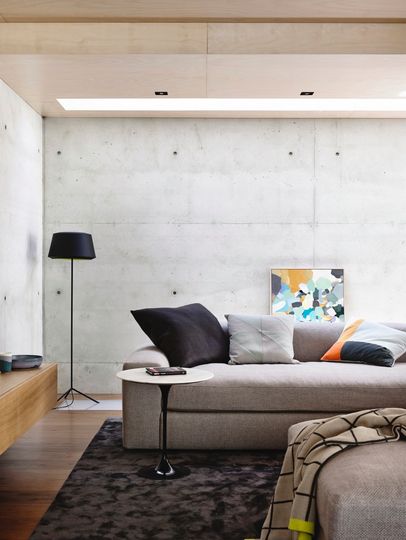
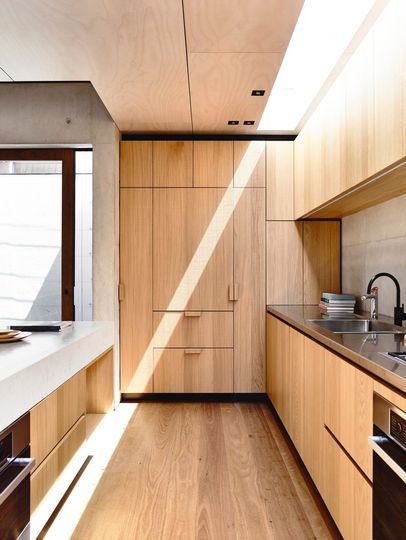
The client’s brief was to introduce as much light as possible into all spaces as well as minimising usage of heating/cooling throughout. This has been achieved by the combination of thermal mass internally and insulation placed externally. The design of spaces and location of windows promote cross-ventilation which is assisted by ceiling fans. Skylights and Floor-lights are introduced to create a combination of striking lighting effects to the ground floor and soft lighting effects into the basement. Borrowed light streams into the basement through the glazing along the stair-well, transforming the space into a flexible multi-use living area.
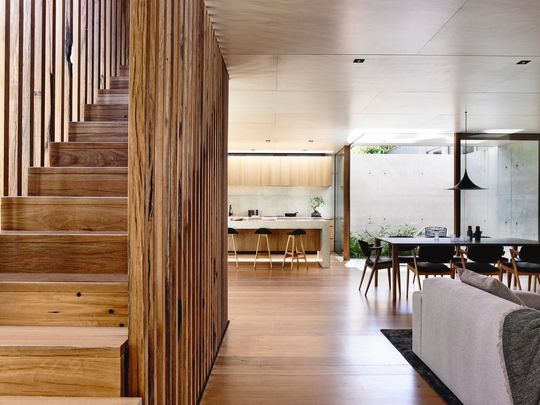
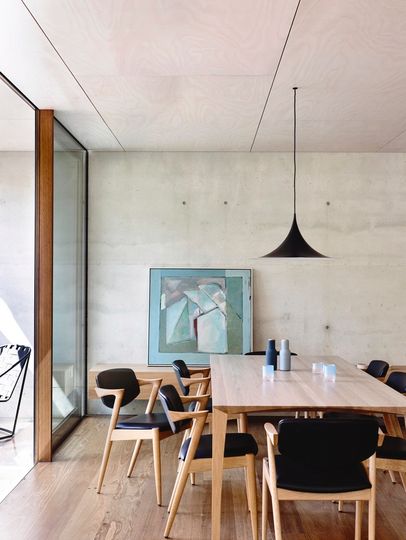
Timber materials used throughout have been sourced from sustainable plantations or recycled. Formerly a bridge in Northern NSW; long lengths of Tallowwood were selected to construct the stair-well, external cladding, interior lining-boards and window frames. Off-form concrete walls and floor are both finish and structure, providing an aesthetic as well as a passive strategy for heating and cooling. The thermal mass of the concrete walls and floors ‘release’ stored heat to the bedrooms above during the night, assisting to average the diurnal temperature changes in the cooler months. Perforated timber panels to windows on the upper floor respect the privacy and amenity of the adjoining properties whilst doubling as shading devices to the bedrooms.
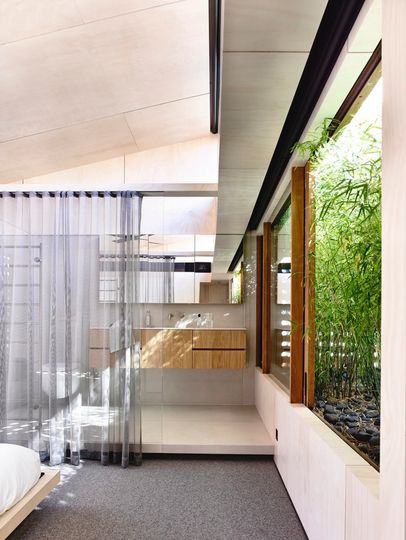
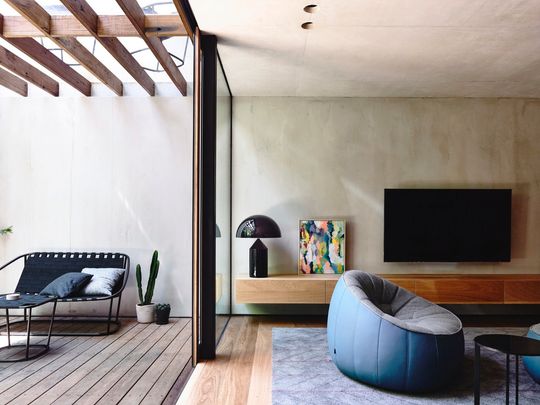
Powered Air-Conditioning has only been implemented within the bedrooms. Comfort is achieved throughout the house by ample cross ventilation and ceiling fans. All external walls are lightweight and insulated against heat transference in summer. These passive strategies provide for healthy living which in-turn passes on savings to the occupant in heating/cooling running costs. The water tank located under the driveway have been specified for a larger capacity in order to reduce the burden on the dilapidated storm water infrastructure, providing a contribution to the local community.
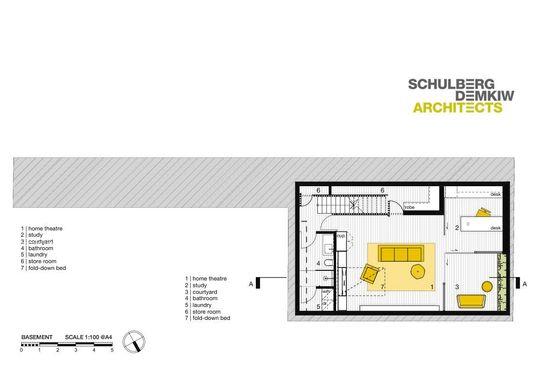
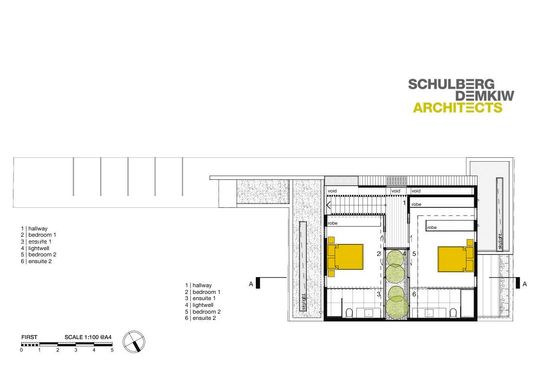
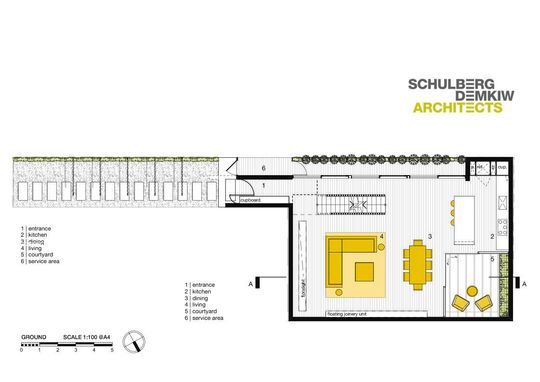
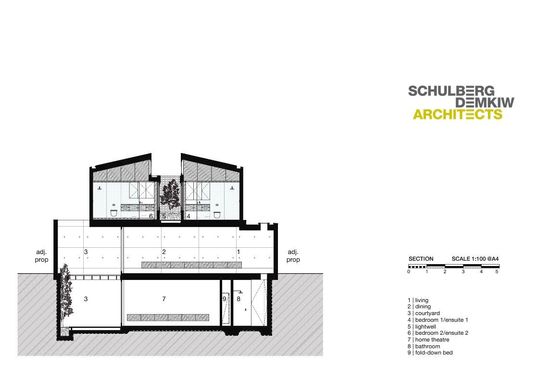
"We have created an environment that is not experienced in housing on small plots of land. The brief demanded no compromise with regards to the level of finish and attention to detail. The value of which has been demonstrated by market response, where the client has received high unsolicited offers for the property because of its unique nature." — Schulberg Denkiw Architects